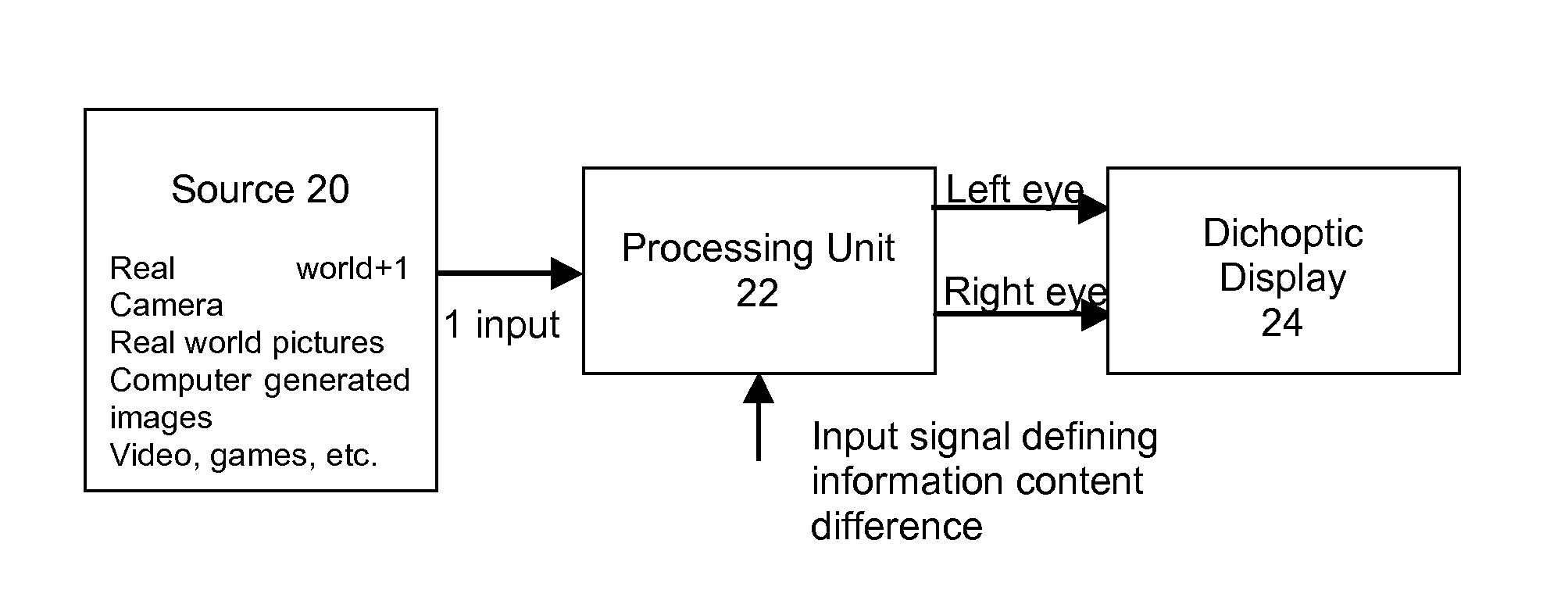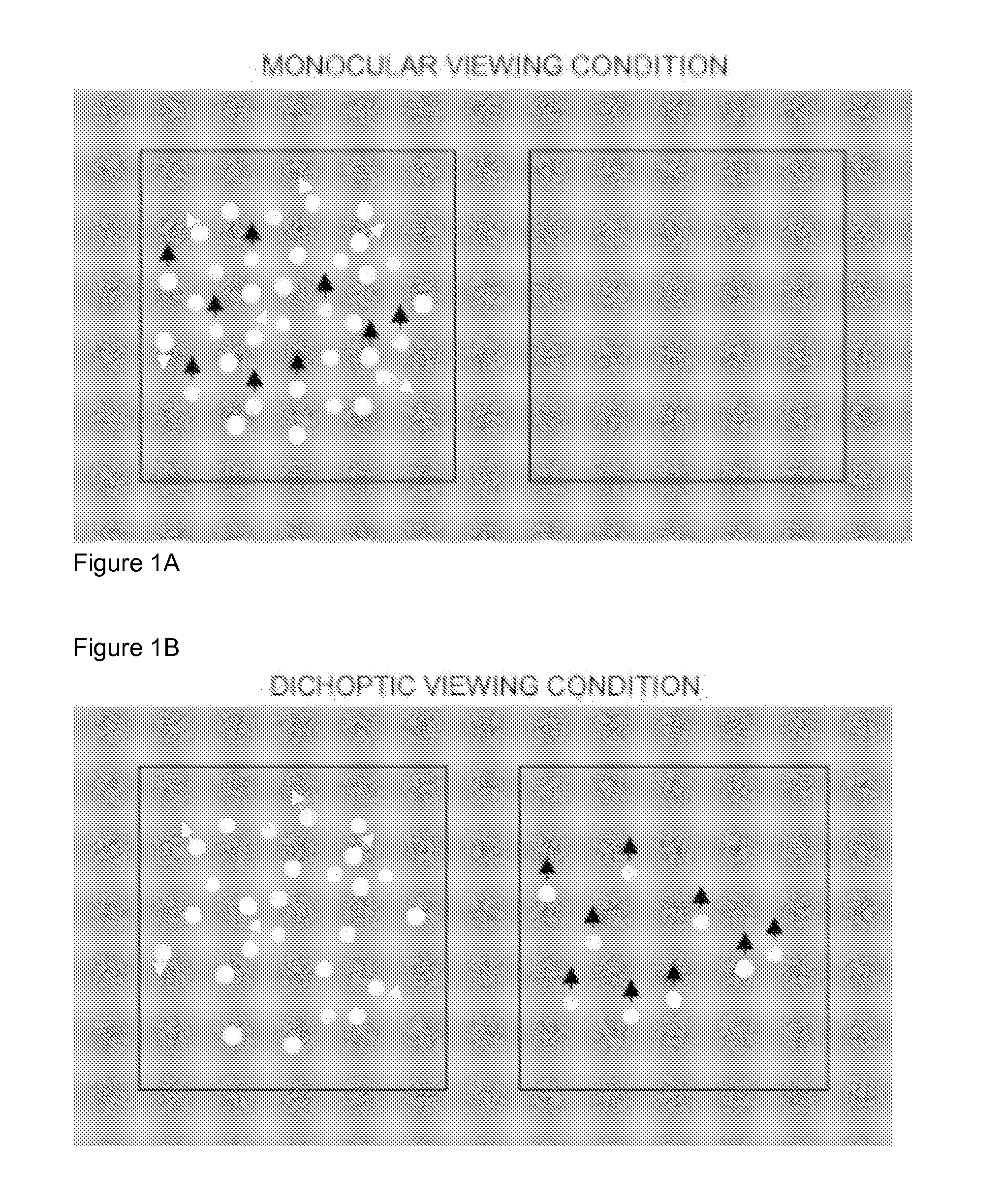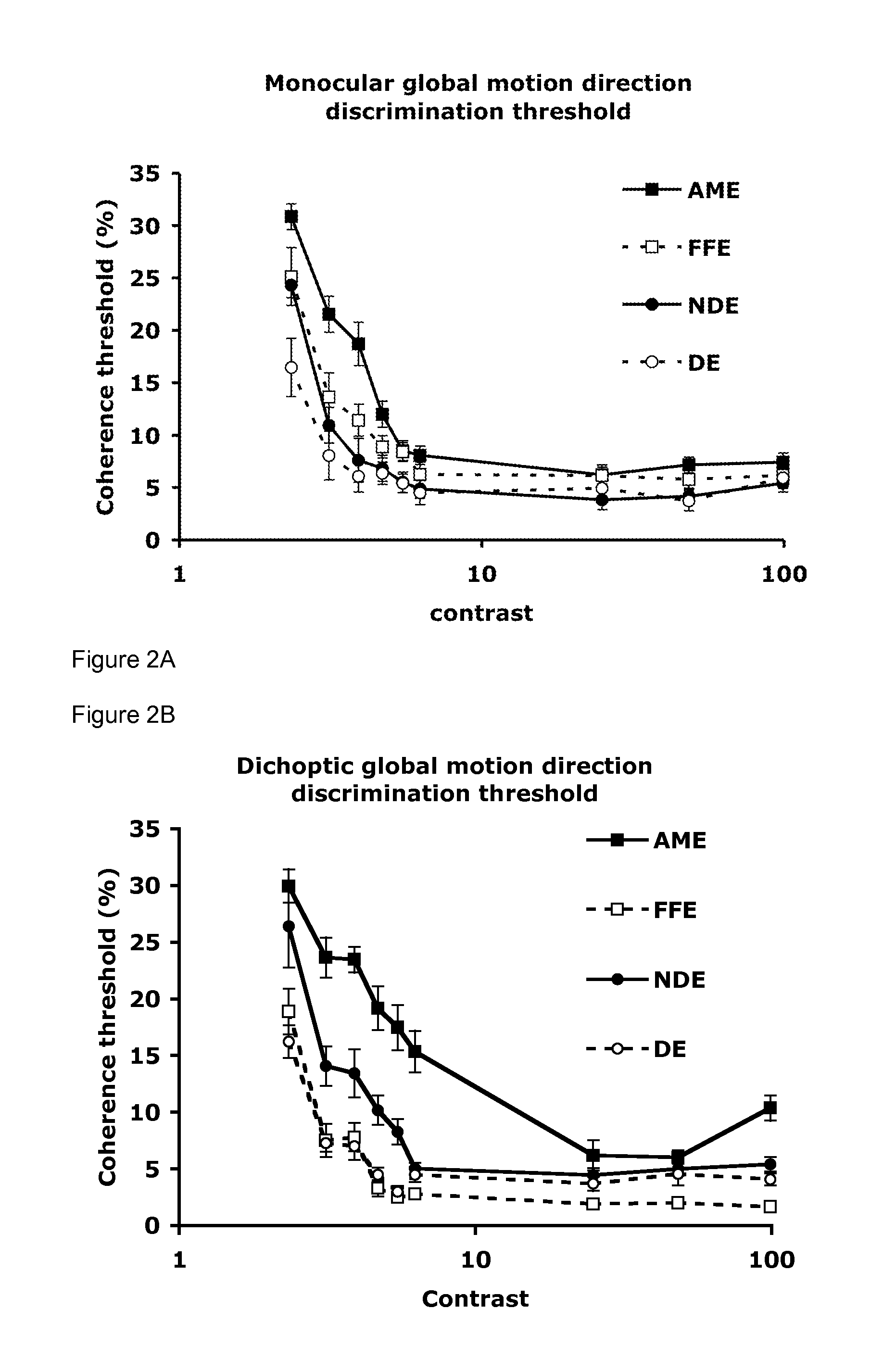Binocular vision assessment and/or therapy
a binocular vision and assessment technology, applied in the field of binocular vision, can solve the problems of inability to guide treatment, cannot lend itself to quantitative and valid measurement, etc., and achieve the effect of improving binocular vision, restoring unaided binocular vision, and reducing information content differences
- Summary
- Abstract
- Description
- Claims
- Application Information
AI Technical Summary
Benefits of technology
Problems solved by technology
Method used
Image
Examples
experiment 1
ay Binocular Interactions
[0042]The dorsal visual processing stream is thought to deal predominantly with motion information (Wurtz & Kandel, 2004). Accordingly, to study the dorsal pathway, applicants used random dot kinematograms (RDKs) to assess the binocular function of this pathway in amblyopia. Applicants used a coherence motion task. These stimuli are typically constructed of two populations of moving dots. The ‘signal’ population all move in the same direction termed the ‘coherent’ direction. Conversely, the ‘noise’ population has no common motion direction as all the dots move in random directions. The ratio of signal to noise dots required to recover the coherent motion direction is called the motion coherence threshold. The measurement of motion coherence thresholds is a well studied paradigm with regard to global motion integration (Braddick, 1974; Newsome, Britten, Salzman & Movshon, 1990; Newsome & Pare, 1988). One additional benefit of this paradigm is that it also pro...
experiment 1a
, Monocular Condition
Both Eyes Open
[0056]Using a stereopscope the stimuli were randomly presented to one eye at a time within each run with all measurements carried out monocularly (see FIG. 1A). The observer was not aware of which eye was seeing the stimulus. Global motion thresholds were measured using a single-interval, forced-choice direction-discrimination procedure. On each trial, observers were presented with an RDK stimulus in which the signal dots moved along an upward or downward trajectory. The observers' task was to identify whether the motion was upwards or downwards. Data-collection was carried out using an adaptive staircase procedure (Edwards & Badcock, 1995). The staircase varied the proportion of signal dots present on each trial, according to the observer's recent response history. The staircase terminated after eight reversals and thresholds (79% correct performance) were taken as the mean of the last six reversals. Each threshold reported was based on the mean o...
experiment 1b
, Dichoptic Presentation
[0058]In experiment 2 the RDKs were presented within two horizontally separated, circular display windows, each equidistant from the centre of the screen (see FIG. 1B). Images were viewed at a distance of 114 cm through a Wheatstone Stereoscope. Each circular window subtended 7° and to aid binocular fusion, each display region was surrounded by a rectangular frame.
[0059]Dots were presented on a homogenous mid-grey background. The luminance modulation (Michelson contrast) and hence the visibility of the dots could be varied independently in two eyes by increasing the luminance of the dots, with respect to the background in an identical manner to Experiment 1.
[0060]In Experiment 2, performance was measured for translational global motion under dichoptic viewing conditions. Each presentation contained two images (see FIG. 1). Previously, in the monocular viewing condition, the signal and noise were presented to one eye and a uniform grey field of mean luminance ...
PUM
 Login to View More
Login to View More Abstract
Description
Claims
Application Information
 Login to View More
Login to View More - R&D Engineer
- R&D Manager
- IP Professional
- Industry Leading Data Capabilities
- Powerful AI technology
- Patent DNA Extraction
Browse by: Latest US Patents, China's latest patents, Technical Efficacy Thesaurus, Application Domain, Technology Topic, Popular Technical Reports.
© 2024 PatSnap. All rights reserved.Legal|Privacy policy|Modern Slavery Act Transparency Statement|Sitemap|About US| Contact US: help@patsnap.com










